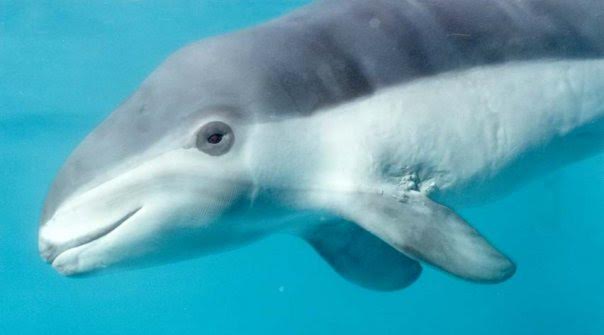Scientific Name
Phocoena dioptrica
Conservation Status (IUCN)
Data Deficient (little or no information is available on the abundance and distribution of the species)
Interesting Facts
There is some historical evidence for the hunting of this species by the indigenous people of Tierra del Fuego. The spectacled porpoise is one of the most poorly understood of all cetacean species.
Spectacled porpoises were briefly (1996-2002) considered as their own genus, Australophocaena. With further genetic and morphometric study, taxonomists once again classified them in the genus Phocoena.
Range
Confirmed in southern coast of Eastern South America from Uruguay to Tierra del Fuego. Some sightings in Tasmania, the Falkland Islands, South Georgia Islands, southern New Zealand. Suspected range is circumpolar in the sub-antarctic zone, though there are currently only a few dozen sightings to substantiate this.
Physical Description and Identifying Features
Counter-shaded with a black back and white belly, black lips, and a black mark around the eye that is circled in the white of the belly (the “spectacle” of the name)
Moderate to large dorsal fin with a convex trailing edge. Male dorsal fins become oval shaped and almost disproportionately large compared to the body size. This is the only strongly sexually dimorphic porpoise species. Dall’s porpoise are also sexually dimorphic during the breeding season, but the differences between male and female are more subtle than in the spectacled porpoise.
17-23 teeth in the upper row, 17-20 teeth in the lower row.
Behavior and Ecology
Occasionally caught in coastal waters, and sometimes seen in rivers and channels, it is thought to be primarily oceanic. Group sizes are typically small from individuals to up to 5 group members. Occasionally a male will be seen in the company of a cow and her calf. No known migrations patterns or seasonal movements.
Reproduction
Calving likely occurs in the southern spring or summer, with little else is known of this species reproduction.

Lifespan
Unknown
Diet
Anchovies, some incidental algae, and some stomatopods (mantis shrimps); based on the data of 4 stomachs.
Conservation Concerns
Gillnets, bottom trawl and mid-water trawls in the fishing industries of Argentina and Chile have contributed to some mortality of spectacled porpoises. Between 1975 and 1990, 34 of these animals were caught incidentally in gillnets off of Tierra del Fuego at the same time that there was a co-occurrence of strandings in southeastern Chile that may have been connected. There are few available data for this species, and population estimates do not exist. As such, the species remains classified as data deficient.
Further Reading and References
[zotpress items=”RSJNT3QT,25XRCHBF” style=”apa”]